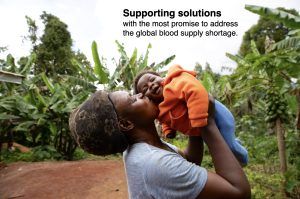The entire blood donation system would be ineffective and risky without stringent donor screening, safety protocols, and rigorous testing that is conducted.
Donor Screening
One of the first steps that every potential blood donor goes through, every single donation, is the registration and screening process. The standardized donor screening form is fairly lengthy, and covers a range of topics, such as:
- Ethnicity – this matters because certain groups may carry different inherited blood markers.
- Medications
- Vaccinations
- Recent illnesses
- Medical history
- Sexual history
- Recent travel to certain areas
- Family medical history
It is important that every donor is assisted with the questionnaire to ensure that there are no language or literacy barriers that might inhibit understanding or result in incorrect answers.
Safety Protocols at Donation Centers
While communicable diseases transmitted via blood transfusions are rare in modern times, there are other risks, such as a type mismatch or allergic reaction. To try to prevent reactions, all blood donations are typed and cross-matched, and some are also more extensively checked for antibodies. This provides closer cross matching for vulnerable individuals like cancer patients.
For example, some O donations are screened for high levels of anti-A or anti-B antibodies. This reduces the risk of a reaction if this universal donor blood is given to a type A, B, or AB individual.
Blood Product Testing
Once blood product donations are collected, they must still go through several tests before they are ready to be given to a recipient. This is to ensure that the blood products are as safe as possible, greatly reducing the risk of transmitting communicable diseases.
At each donation, the following mandatory tests are performed:
- Hepatitis B
- HIV 1 and 2
- Hepatitis C
- Human T-Cell lymphotropic virus
- Syphilis
Under special circumstances, such as if the patient has recently traveled, the blood is also screened for:
- Malaria
- West Nile Virus
- Trypanosoma cruzi
Additionally, certain individuals are barred from donating due to the risk of transmitting certain rare diseases called prion-associated diseases.
People who are at extra risk are those that have:
- Received a blood transfusion or tissue/organ transplant from a donor before 1980.
- Received human pituitary-derived hormones, grafts of human dura mater or cornea, sclera, or ocular tissue.
- Members of a family at risk of inherited prion diseases
- Been notified that they may be at increased risk of Creutzfeldt-Jacob disease due to possible exposure.
- Been notified that they may be at increased risk because a recipient of their blood or tissues has subsequently developed a prion-related disorder.
Although blood donation and transfusions have become common and easily accessible in the U.S. most of the time, an entire system is in place to ensure that a safe, consistent, and reliable supply is maintained and that both donors and recipients’ health is protected in the process.
Karen Stockdale, RN, has more than 20 years experience in healthcare. She is also a medical and technical writer and editor.

